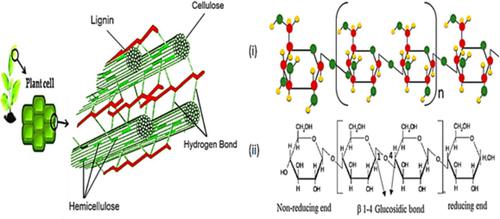当前位置:
X-MOL 学术
›
Polym. Eng. Sci.
›
论文详情
Our official English website, www.x-mol.net, welcomes your feedback! (Note: you will need to create a separate account there.)
Tensile and morphological properties of nanocrystalline cellulose and nanofibrillated cellulose reinforced PLA bionanocomposites: A review
Polymer Engineering and Science ( IF 3.2 ) Pub Date : 2020-10-16 , DOI: 10.1002/pen.25560 Nor Fasihah Zaaba 1 , Mariatti Jaafar 1 , Hanafi Ismail 1
Polymer Engineering and Science ( IF 3.2 ) Pub Date : 2020-10-16 , DOI: 10.1002/pen.25560 Nor Fasihah Zaaba 1 , Mariatti Jaafar 1 , Hanafi Ismail 1
Affiliation

|
In recent years, bionanocomposites have received growing attention in science and industry due to their renewability, biodegradability and superior mechanical properties. Nanocellulose is another promising material that use as a reinforcement filler for bionanocomposite materials due to its lightweight, high surface area, high mechanical strength, high aspect ratio and low density. Different nanocellulose loading, sources, surface modification/functionalization and properties of nanocellulose are important in the production of bionanocomposites. In general, nanocellulose reinforced PLA bionanocomposite offers enhancement in tensile strength and elastic modulus. However, only minimal nanocellulose loadings are required for optimal results due to the incompatibility between the hydrophilic nanocellulose and hydrophobic PLA. This paper reviews the sources of nanocellulose and the properties of nanocellulose with a focus on the tensile and morphological properties of PLA bionanocomposites. Applications of nanocellulose in various industries are discussed in this article. This review article provides some important information. First, this study reviewed the application of nanostructured cellulose in biodegradable polymers. There are two types of nanostructured cellulose: nanocrystalline cellulose (NCC) and nanofibrillated cellulose (NFC). Second, the status on articles published on nanocellulose and PLA/nanocellulose over the past 10 years is reported. Third, the authors of this paper implemented a holistic and critical review to provide a comprehensive understanding of the different properties between NCC and NFC, the application of nanocellulose in bionanocomposites, as well as the properties of PLA and PLA bionanocomposites. Moreover, the influence of NCC and NFC on the tensile and morphological properties of bionanocomposites is covered in this article.
中文翻译:

纳米晶纤维素和纳米原纤化纤维素增强的PLA纳米复合材料的拉伸和形态学特性:综述
近年来,由于其可再生性,可生物降解性和优异的机械性能,生物纳米复合材料在科学和工业中受到越来越多的关注。纳米纤维素由于其重量轻,高表面积,高机械强度,高长宽比和低密度而成为另一种有望用作生物纳米复合材料的增强填料的材料。不同的纳米纤维素负载量,来源,纳米纤维素的表面改性/功能化和性质在生物纳米复合材料的生产中很重要。通常,纳米纤维素增强的PLA生物纳米复合材料可提高拉伸强度和弹性模量。然而,由于亲水性纳米纤维素和疏水性PLA之间不相容,因此仅需要最小的纳米纤维素负载即可获得最佳结果。本文综述了纳米纤维素的来源和纳米纤维素的特性,重点研究了PLA纳米复合材料的拉伸和形态学特性。本文讨论了纳米纤维素在各种行业中的应用。这篇评论文章提供了一些重要信息。首先,这项研究回顾了纳米结构纤维素在可生物降解聚合物中的应用。纳米结构纤维素有两种类型:纳米晶体纤维素(NCC)和纳米原纤化纤维素(NFC)。其次,报告了过去十年中有关纳米纤维素和PLA /纳米纤维素的文章发表情况。第三,本文的作者进行了全面而严格的审查,以全面了解NCC和NFC之间的不同特性,纳米纤维素在生物纳米复合材料中的应用,以及PLA和PLA纳米复合材料的性能。此外,本文还讨论了NCC和NFC对仿生纳米复合材料拉伸和形态性能的影响。
更新日期:2020-10-16
中文翻译:

纳米晶纤维素和纳米原纤化纤维素增强的PLA纳米复合材料的拉伸和形态学特性:综述
近年来,由于其可再生性,可生物降解性和优异的机械性能,生物纳米复合材料在科学和工业中受到越来越多的关注。纳米纤维素由于其重量轻,高表面积,高机械强度,高长宽比和低密度而成为另一种有望用作生物纳米复合材料的增强填料的材料。不同的纳米纤维素负载量,来源,纳米纤维素的表面改性/功能化和性质在生物纳米复合材料的生产中很重要。通常,纳米纤维素增强的PLA生物纳米复合材料可提高拉伸强度和弹性模量。然而,由于亲水性纳米纤维素和疏水性PLA之间不相容,因此仅需要最小的纳米纤维素负载即可获得最佳结果。本文综述了纳米纤维素的来源和纳米纤维素的特性,重点研究了PLA纳米复合材料的拉伸和形态学特性。本文讨论了纳米纤维素在各种行业中的应用。这篇评论文章提供了一些重要信息。首先,这项研究回顾了纳米结构纤维素在可生物降解聚合物中的应用。纳米结构纤维素有两种类型:纳米晶体纤维素(NCC)和纳米原纤化纤维素(NFC)。其次,报告了过去十年中有关纳米纤维素和PLA /纳米纤维素的文章发表情况。第三,本文的作者进行了全面而严格的审查,以全面了解NCC和NFC之间的不同特性,纳米纤维素在生物纳米复合材料中的应用,以及PLA和PLA纳米复合材料的性能。此外,本文还讨论了NCC和NFC对仿生纳米复合材料拉伸和形态性能的影响。



























 京公网安备 11010802027423号
京公网安备 11010802027423号